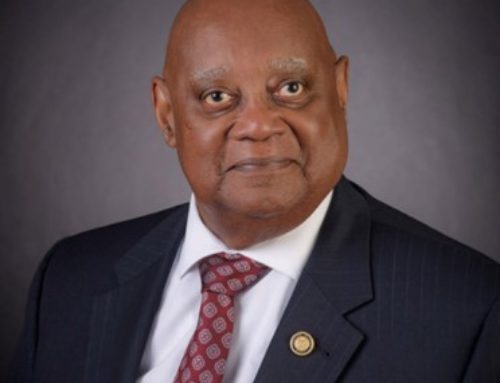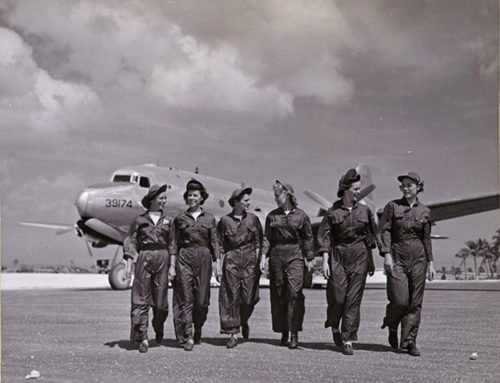This summer will mark the 60th anniversary of Nautilus’ historic journey to the North Pole. After making the journey, USS Nautilus sailed into New York harbor to reunite crew members with their families and meet the president. Only three short hours from her first home in Groton, CT, Nautilus would dock in one of the most famous cities in the world at the Brooklyn Navy Yard- a piece of New York and Naval history. Today, the Brooklyn Navy Yard no longer welcomes celebrated ships but has been converted into a hub of business where the community can come together. While now home to a countertop manufacturing company, a distillery, and a produce farm, in its early days, the Brooklyn Navy Yard played a vital role in the Navy and would see its fair share of submarines pass through her docks.
The land the Brooklyn Navy Yard sits on today was originally purchased by Dutch settler Jansen de Rapelje in 1637. The 335 acres on Wallabout Bay was purchased from the Lenape Indians that were Native to New York harbor. During the American Revolution, Wallabout Bay was occupied by the British. According to the Brooklyn Navy Yard website, the most famous of British ships, the Jersey was moored here where American soldiers, merchants, and traders were imprisoned for disobeying the British embargo. It was 1801 when President John Adams saw the potential in the Wallabout Bay area. A New Englander, Adams knew the importance of the sea and of having a strong Naval Force. He established the first five Naval shipyards, including the Brooklyn Navy Yard. In 1833, Commodore Matthew C. Perry founded the Naval Lyceum (the predecessor to the U.S. Naval Academy) at the Yard. The first Naval publication was published there in 1836 with contributors such as Washington Irving and James Fenimore Cooper. It was 1872 that the Brooklyn Navy Yard saw its first submarine.
During the Civil War, the Union Navy was looking for ways to counter the CSS Hunley and Pioneer. They looked to a prototype submarine aptly titled Halstead’s Folly or, the Intelligent Whale. In 1863, Scovel S. Merriman, Augustus Price and Cornelius Bushnell began work on the Intelligent Whale in New Jersey. In 1864, the American Submarine Company replaced Price and Bushnell. Due to soaring costs and legal battles, control of the boat went to trustees of General Nathaniel Halstead and Col. Edward W. Serrell in 1865.

Figure 2 The Intelligent Whale in the Brooklyn Navy Yard circa 1898 https://www.loc.gov/resource/cph.3b04942/
Despite ongoing financial issues, Halstead finished the project by April of 1866. The submarine was staffed by four men who turned cranks attached to a propeller. Compressed air was kept in two tanks that allowed for ten hours of submerged operation. “Two large ballast tanks fore and aft were connected to the air tanks and to the water surrounding the craft. A rudder and aft trim planes allowed the pilot to control the boat’s course, diving, and surfacing. A short conning tower with bull’s eye glass provided the skipper with limited visibility while partially submerged. Other navigational aids included a compass, a depth gauge, and air pressure indicator. The crew embarked via a central hatch topside, but the craft’s divers deployed through two wooden “gates” in the floor. To submerge Intelligent Whale the crew filled the water tanks by opening a valve. To anchor the submerged craft the crew deployed two 15-inch shot (weighing 350 pounds each) by working windlasses attached to wire cable in two watertight boxes. To maintain air quality while submerged, the craft had a device for spraying water through the air, and thumb valves at the top of the boat, which could be opened to release foul air. To surface, the crew pumped the water from the tanks by hand or forced it out with compressed air.”[1] Halstead’s bad luck would follow the Intelligent Whale. Despite legal battles, The Navy purchased the vessel from Halstead. However, before official trials could be done, Halstead passed away. Due to personal issues in his life, his death lead to a scandal and a tainted name for his submarine. This along with the small number of people who knew how to operate the vessel, caused tests to be delayed. Once they were able to commence, flooding saw her short career end as the Navy marked the vessel a failure. Despite this fact, Intelligent Whale became a curiosity and would be displayed at the Brooklyn Navy Yard. She would remain at the Yard until 1968 when she was moved to Washington D.C. and then finally to her current place in New Jersey. This means that the Intelligent Whale was in view of the Nautilus as she returned home from her historic journey marking the coming together of two vital points of submarine history.
While no submarines were ever built in the Yard, the dry docks were a frequent home for repairs and short stays. The USS Porpoise and the USS Shark, built in 1903, spent time being refitted in the Navy Yard dry docks. It was also here that they were disassembled in 1908 to be transported to the Philippines where they served until 1919. During World War I, German U-boats were brought to the Yard to be dismantled and gain valuable information on how German submarine technology worked. This work allowed U.S. Forces to strip away German dominance in the submarine field at the time. The early 1900’s was still an experimental time in submarine development. While today’s vessels see few accidents, this was not the case for the early boats. In June of 1915, the USS Sturgeon (also known as E-2 and SS-25) arrived at the Brooklyn Navy Yard to complete a refit. E-2 was the first submarine to be equipped with a diesel engine. However, this new engine had problems. The vibrations caused damage to the battery system which could leak lead acid that, when mixed with salt water, could create a deadly chlorine gas. When she entered the yard that June, E-2 was supposed to have its engines replaced and batteries upgraded. A new battery system had been created by Thomas Edison that would allow the boat to travel further while submerged. The unit was also made of nickel iron instead of lead-acid, getting rid of the chlorine gas issue. However, this new battery did create hydrogen gas. Tests run on December 7th, 1915 found the batteries to seem to be a better fit. Initial reports found that they ran faster on less fuel.

Figure 3 Crewmembers atop the (E-2) submarine’s conning tower, after returning from a patrol during World War I.
Courtesy of the Submarine Force Library and Museum, Groton, Connecticut, 1972.
E-2 was in Dry Dock No. 2 in January of 1916 still undergoing tests. On January 15th, an explosion in the battery compartment claimed the lives of five crew members. Investigations found the hydrogen gas to be the culprit of the explosions. Once repairs were completed, E-2 went back into service as a training vessel. This incident caused the Navy to abandon the Edison technology and redesign a safer lead-acid cell battery. These redesigns would become the foundation for the technology that is still used in submarines today. As a side note, the chief of submarines at the Navy Yard who oversaw the investigation was one Chester W. Nimitz- Fleet Admiral of the Pacific Fleet. We remembered those who lost their lives that January day, as their names are Guy Hamilton Clark Jr. (Machinist’s Mate), Roy B. Seaber (Electrician, third-class), Joseph Logan (Navy Yard plumber), James H. Peck (Navy Yard plumber) and John P. Schultz (Navy Yard Workman).

Figure 4 USS E-2 (Submarine # 25)
Fine screen halftone reproduction of a photograph of the submarine underway prior to World War I. U.S. Naval Historical Center Photograph. http://www.ibiblio.org/hyperwar/OnlineLibrary/photos/sh-usn/usnsh-e/ss25.htm
The Yard would triple during World War II in order to help with the war effort. Despite the numerous ships built during her years and the historic moments she witnessed, Secretary of Defense Robert McNamara closed the Yard for good in 1966 after announcements about base closures came out in 1964. At the time, the Yard had over 9,000 workers and was the oldest active industrial plant in New York State. In 1969, New York City along with a non-profit group took control of the property turning it into a large scale industrial plant which it continues to operate as today. There are still dry docks at the Yard to service ships, continuing its legacy for years to come. Today, Bldg 92 serves as an exhibition center and reminds visitors of the property’s historic past. For those of us here in Groton, we will always remember the Nautilus sailing into New York Harbor, headed to the Yard to greet family and friends after one of the most historic trips ever made. Thus, solidifying a place in history for the Brooklyn Navy Yard.
For more in-depth information on the Brooklyn Navy Yard’s history and current business you can visit https://brooklynnavyyard.org/
[1] http://www.public.navy.mil/subfor/underseawarfaremagazine/Issues/Archives/issue_38/whale.html





